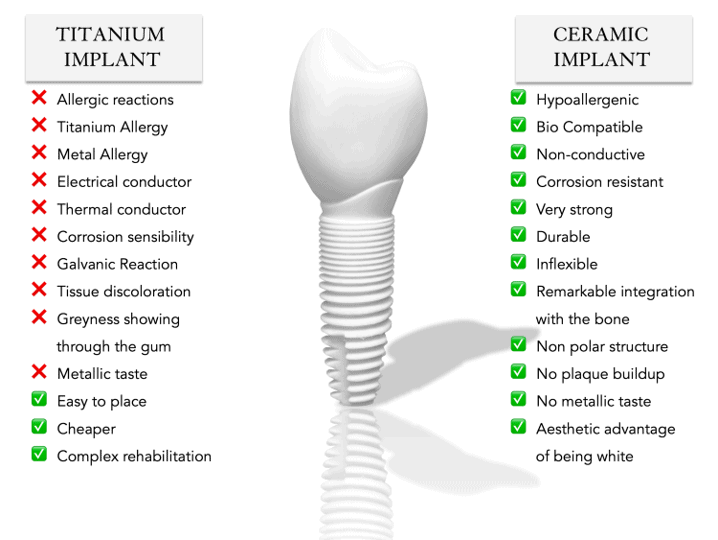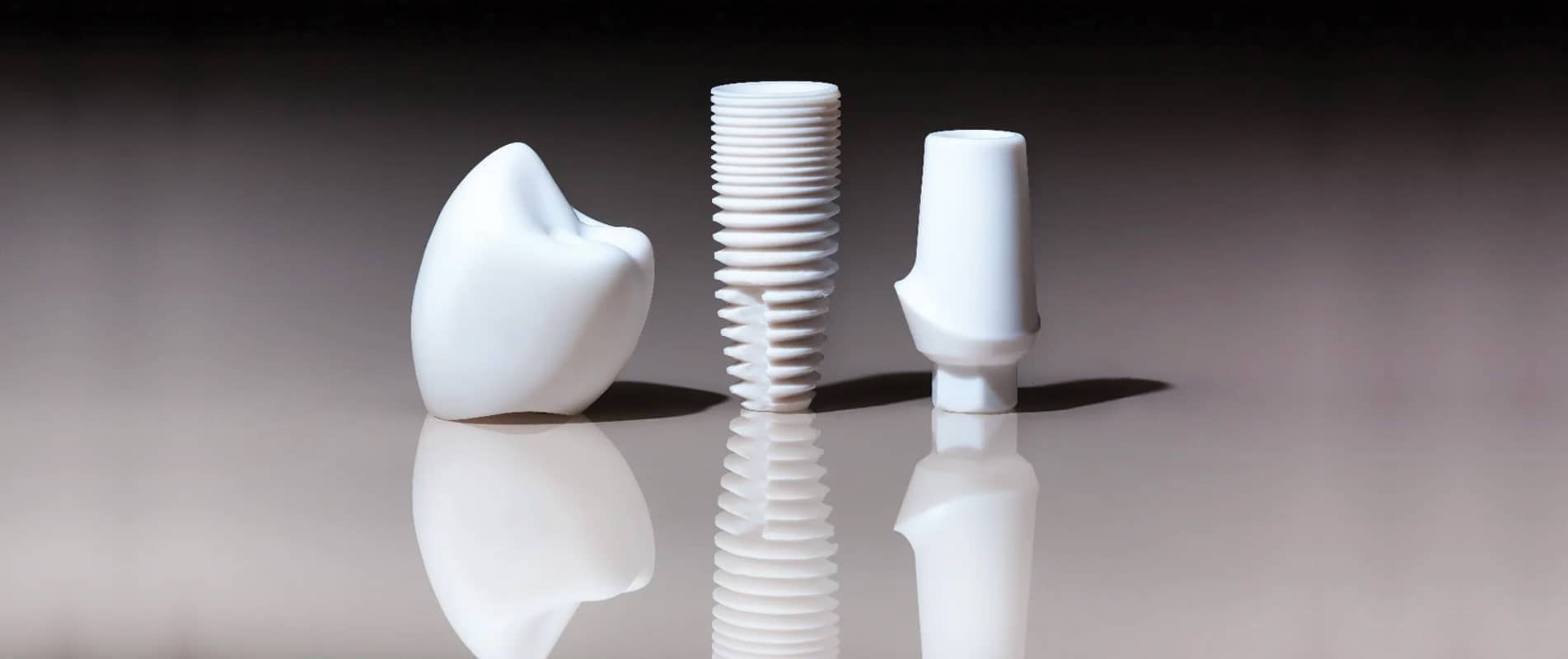Dental implants have revolutionized dentistry, providing patients with a reliable solution for missing teeth while preserving function and aesthetics. Traditionally dominated by titanium implants, the implantology market has witnessed a growing shift towards biocompatible alternatives such as ceramic implants. With increasing awareness of systemic health and biocompatibility, patients and dental professionals are exploring material choices more critically than ever.
Approximately 500,000 dental implants are placed annually in the United States alone, reflecting their growing adoption. However, as demand surges, so do concerns about the biological impact of traditional materials. This raises an important question: how do we ensure that implant materials are not only durable but also harmonious with overall health?
This comprehensive guide will compare ceramic implantology with traditional titanium implants from the perspective of a biological dentist. By exploring everything from material composition to patient outcomes, we aim to provide insight into what makes ceramic implants a noteworthy option for health-conscious individuals.
The Evolution of Dental Implants
Dental implants date back thousands of years, with attempts at tooth replacement documented as early as ancient Egypt. However, the modern era of implantology began in the 1950s when titanium emerged as the material of choice due to its successful osseointegration, or ability to bond directly with bone.
The following decades saw significant advancements, including improved implant designs, surface treatments to enhance stability, and innovations in surgical protocols. By the 1990s, titanium implants had become the gold standard, backed by long-term success rates and robust clinical data.
Despite their dominance, challenges like metal allergies, galvanic activity, and aesthetic concerns in anterior regions began prompting exploration of alternatives. This led to the development of ceramic dental implants in the early 2000s, primarily leveraging zirconia, a material celebrated for its biocompatibility and natural tooth-like appearance.
Today, the global dental implant market is evolving toward more sustainable and biocompatible solutions, with ceramic implants gaining traction as a preferred alternative, particularly in holistic and biological dentistry practices.
Understanding Traditional Titanium Implants
Titanium implants are composed of 99% pure titanium or titanium alloys combined with metals like aluminum or vanadium. This composition contributes to their strength and ability to withstand the forces of chewing and daily use.
Limitations from a Biological Perspective
- Metal Sensitivities: Certain individuals experience allergic reactions to titanium, resulting in inflammation or implant failure.
- Galvanic Activity: When paired with other metals (e.g., dental fillings), titanium may produce electrical currents that disrupt body chemistry.
- Aesthetic Concerns: Titanium can create a gray sheen under gums, particularly in thin tissue areas or anterior teeth.
Although titanium implants are widely used and respected, these limitations highlight the need for alternatives that prioritize biocompatibility.
Ceramic Implants: The Biological Alternative
Ceramic implants, often made from zirconia, are an emerging option within the implantology field. Zirconia is a metal-free, ceramic material offering durability and superior biocompatibility compared to traditional titanium implants.
Benefits of Ceramic Implants
- Biocompatibility: Ceramic materials are hypoallergenic and do not trigger metal sensitivities or immune responses.
- Aesthetic Advantages: Their tooth-colored and non-metallic nature makes ceramic implants ideal for visible areas such as the front teeth.
- Low Bacterial Adhesion: Ceramic surfaces are less prone to plaque buildup, reducing the risk of peri-implantitis.
Innovations in Ceramic Implant Technology
Recent advancements include the introduction of two-piece ceramic implant designs, offering similar flexibility to titanium systems, and enhanced surface treatments for improved osseointegration. Studies continue to report encouraging success rates, particularly in patients prioritizing aesthetics and holistic health.
Clinical Comparison: Ceramic vs. Titanium

The Biological Dentist’s Perspective on Implant Materials
Biological dentists adopt a patient-centered, whole-body approach to care, emphasizing the importance of biocompatibility in material selection. When considering implants, they evaluate several factors, such as the patient’s medical history, immune responses, and lifestyle habits.
Key considerations include identifying sensitivities through biocompatibility testing, managing inflammation, and mitigating systemic risks associated with metal-based implants. For biological dentists, ceramic implants often align better with their ethos of minimizing potential interference with the body’s natural processes.
Dr. Steven Leigh, a leading biological dentist, explains, “Choosing the right implant material is about more than stability or longevity. It’s about creating harmony between the restoration and the patient’s overall health.”
Patient Assessment and Ideal Candidates
Certain patients are better suited for ceramic implants, including:
- Those with known metal allergies or sensitivities.
- Individuals prioritizing aesthetics for anterior restorations.
- Health-conscious individuals seeking biocompatible solutions.
Proper case selection is essential to maximize success rates, addressing factors like bone quality, overall health, and budget considerations.
The Implant Procedure and Long-Term Outcomes
The implant process with ceramic systems generally follows similar surgical protocols to titanium, with slight variations in healing timelines and care requirements. Post-procedure maintenance is vital for ensuring long-term success, particularly in minimizing inflammation and plaque buildup.
Research suggests ceramic implants offer comparable longevity, with notable advantages in maintaining aesthetic stability and minimizing soft tissue irritation over time.
Shaping the Future of Implantology
Material choice in dental implants is no longer just about functionality. With growing emphasis on health-conscious solutions, it’s clear that biocompatibility is shaping the future of implantology. Ceramic implants, supported by emerging research, represent a paradigm shift towards holistic, patient-centered care.
If you’re considering implants and want to explore the biological benefits of ceramic options, schedule a consultation with our specialists at ROZE BioHealth Clinic. Click below to book your appointment and take the first step toward a healthier, more harmonious implant solution.
Book an appointment with ROZE BioHealth Clinic Specialists

